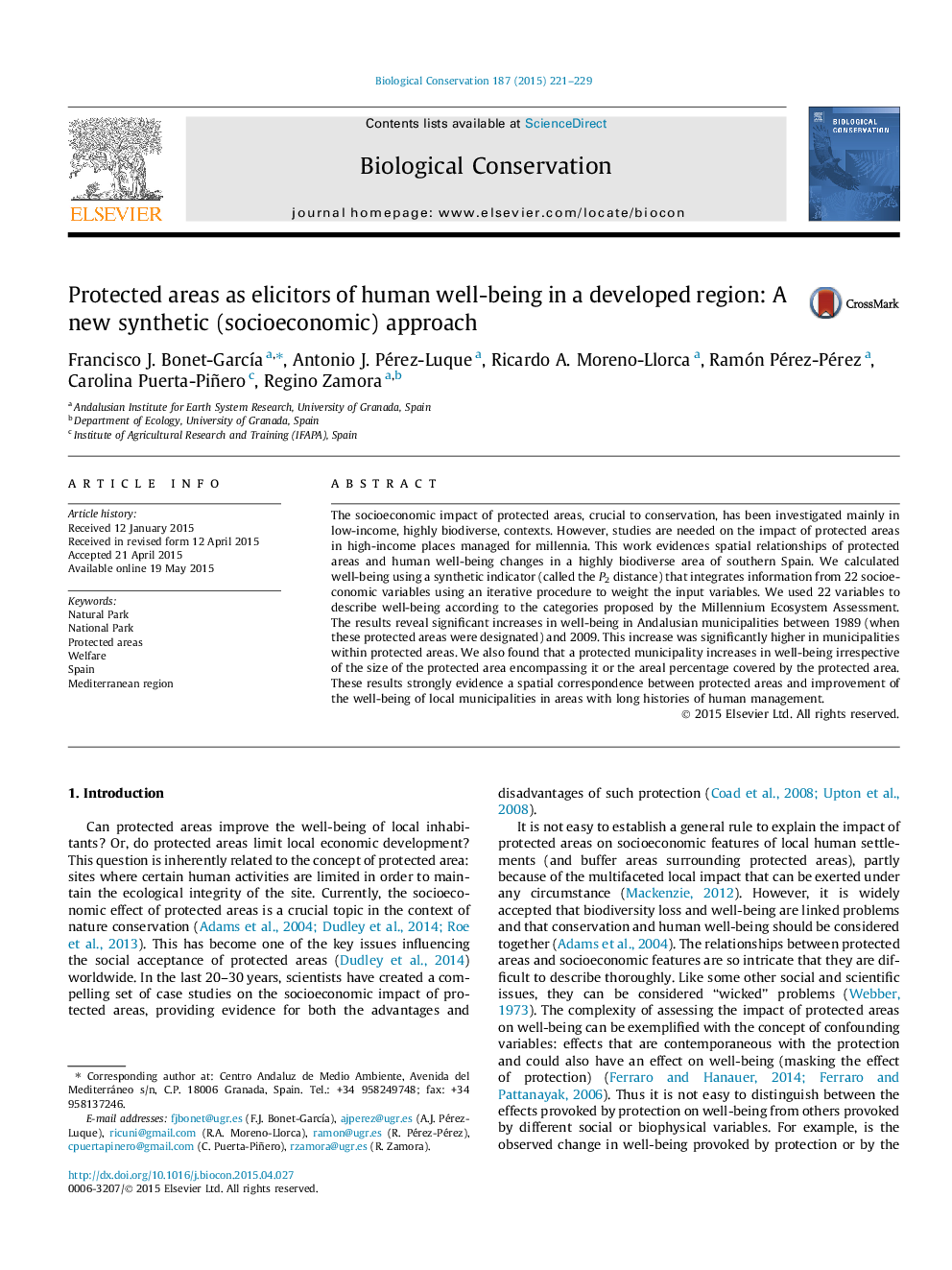| Article ID | Journal | Published Year | Pages | File Type |
|---|---|---|---|---|
| 6299260 | Biological Conservation | 2015 | 9 Pages |
â¢We computed well-being using a synthetic indicator that integrates information from 22 variables.â¢Well-being has significantly increased in Andalusia since 1989-2009.â¢This increase has been significantly higher in protected municipalities.
The socioeconomic impact of protected areas, crucial to conservation, has been investigated mainly in low-income, highly biodiverse, contexts. However, studies are needed on the impact of protected areas in high-income places managed for millennia. This work evidences spatial relationships of protected areas and human well-being changes in a highly biodiverse area of southern Spain. We calculated well-being using a synthetic indicator (called the P2 distance) that integrates information from 22 socioeconomic variables using an iterative procedure to weight the input variables. We used 22 variables to describe well-being according to the categories proposed by the Millennium Ecosystem Assessment. The results reveal significant increases in well-being in Andalusian municipalities between 1989 (when these protected areas were designated) and 2009. This increase was significantly higher in municipalities within protected areas. We also found that a protected municipality increases in well-being irrespective of the size of the protected area encompassing it or the areal percentage covered by the protected area. These results strongly evidence a spatial correspondence between protected areas and improvement of the well-being of local municipalities in areas with long histories of human management.
